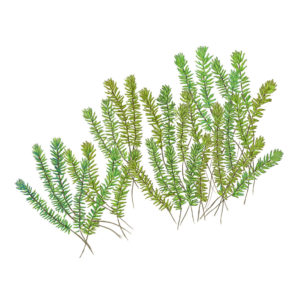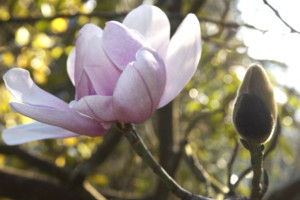January-March 2007
WEB EXTRA: Rare and Endangered Mosses
Many of us go through life barely noticing mosses and their cousins, liverworts and hornworts. It’s easy to miss bryophytes—the collective name for mosses, liverworts, and hornworts—painted on a tree trunk, growing on a rock, poking out of almost any spot that gets occasional moisture.
Dan Norris, curator of bryology at the University and Jepson Herbaria at UC Berkeley, has spent his career not missing those bryophytes. He and his colleagues have been cataloging California’s diversity of mosses for 40 years. “We keep on adding more almost monthly,” says Norris. “Before I came to California in 1967, there was only one man with any history of looking for mosses. And that was for a doctoral thesis, so he hadn’t spent much time on it.”
Things are different today, with a network of amateur moss-watchers around the state sending specimens and reporting new records. At last count, there are over 750 species of bryophytes in the state, and Norris says he has more than a dozen species new to science in his lab, waiting for him to find the time to write up and publish his findings.
Is there such a thing as a rare and endangered bryophyte? Well, yes, but with new species coming to light so often, it can be hard to say which are rare or might be at risk. But Norris says mosses should be catalogued in all state and federal inventories and habitat plans, just like spotted owls, coho salmon, and endangered wildflowers.
There are about 40 species of bryophytes across the state that are considered rare or endangered in one way or another, though none are legally delineated yet. Sierra Nevada ecosystems, and especially wet peatlands at high altitudes, are home to the largest number of endangered bryophytes, mostly because they are associated with threatened habitats.
At least initially, any new species might seem rare, since it has only just been found. “We use a lot of discretion on this,” says Norris. “For instance, if the range is almost entirely in preserved areas, then we might not call them endangered unless activities are coming onto that area that would endanger them.”
The Bay Area supports at least four species of mosses restricted to just this region. Three of those were only recently discovered. Bestia longipes (known since 1865) grows on seasonally wet vertical rock walls and tree bases in deep canyons. First published in 2004, Dacryophyllum falcifolium grows on sheltered rock terraces above streams in coastal redwood forests. These two species aren’t considered endangered because their habitats are well-protected in parks, says Norris.
Norris considers the other two endangered. Orthotrichum kellmanii (published in 2005) is found on sandstone in chaparral in coastal Santa Cruz and San Mateo counties. Its preferred habitat is quite restricted. Orthotrichum underwoodii (published in 2001) grows in oak-woodland habitat at just one site in coastal Santa Cruz County—the exact location isn’t publicized to protect the mosses.
—Dan Rademacher
FIND OUT MORE ABOUT BRYOPHYTES
UC Berkeley’s Bryolab
http://ucjeps.berkeley.edu/bryolab/
American Bryological and Lichenological Society
https://mywebspace.wisc.edu/jpbennet/web/abls/
All about hornworts




